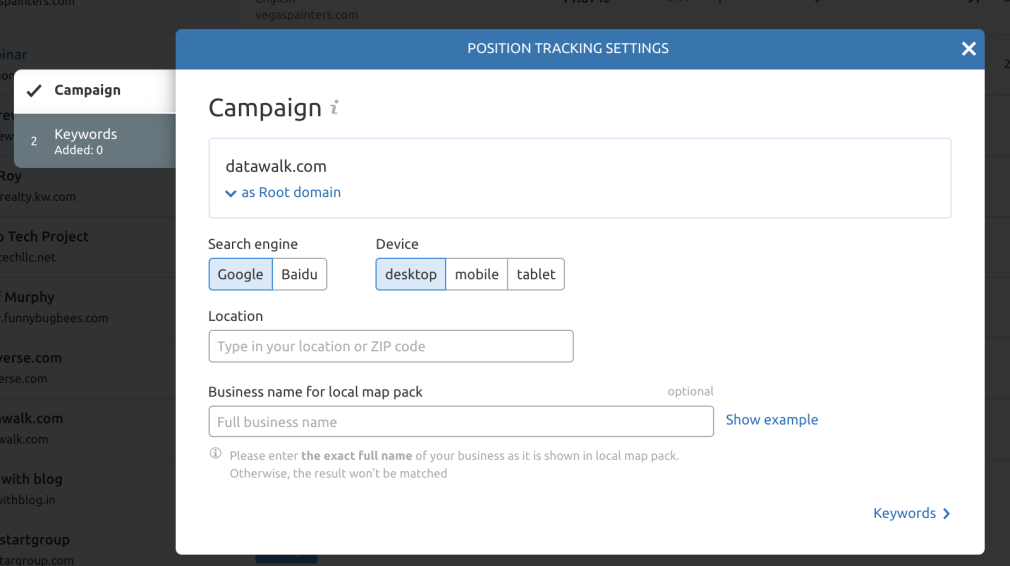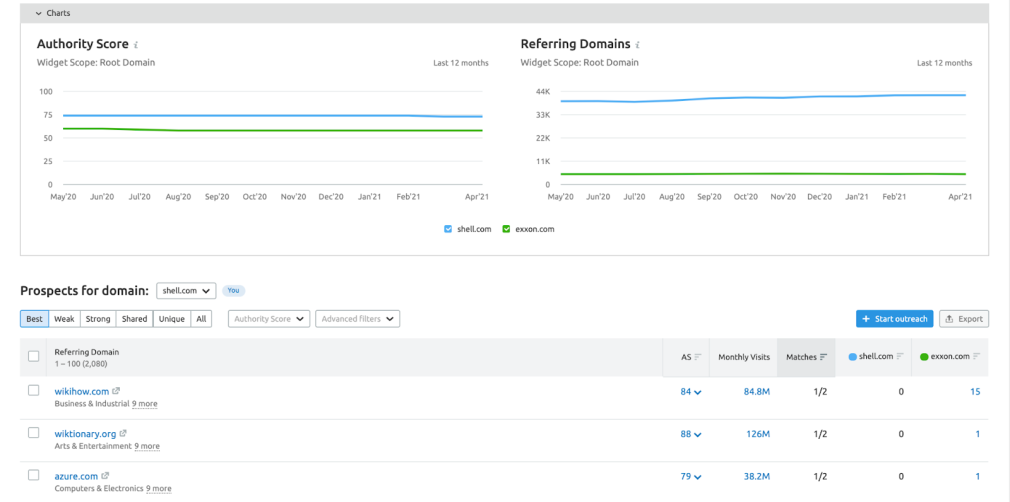Content is a potent tool for businesses. It allows you to communicate who you are, connect with your customers, and evoke a response. When done right, good content sells.
To create good content, you’ll need to develop a content strategy. In this guide, we’ll get you started on creating your own in less than an hour.
What Is Content Strategy? How To Create Good Content Content Strategy Goals How To Create A Content Strategy In 4 Steps Key TakeawaysWhat Is Content Strategy?
Content strategy is all about developing content that helps achieve a goal. Your content strategy guides and dictates the creation and delivery of each piece of content.
You should discuss your content strategy with business stakeholders before creating or publishing anything. Ensure that all content you produce is working together to meet your primary business goal.
What Is Content?
Content is audio or visual information. Content types vary from written blog posts to promotion graphics to ad copy to influencer videos. In general, content is any type of information presented to a specific audience to evoke a particular response.
The term “content” appears in other marketing techniques as well, like content marketing. Content marketing is a process or type of digital marketing that focuses on distributing valuable content online.
Content marketers are concerned with connecting to their audiences and improving brand awareness. In contrast, content strategists focus on creating and distributing valuable, relevant, and consistent content.
So if “content” is a broad term, how can you be sure you’re creating good content that works?
How To Create Good Content
Good content attracts an audience and encourages them to take action. No matter the content type, your content should consider what your audience wants to see and the (profitable) next step you want them to take.
To create good content, consider these four factors in your planning stage:
Information
What is the message you need to communicate in your content? Will your content be informative or entertaining?
Content is about delivering the right message to evoke a reaction, so you must convey the message appropriately. Otherwise, your audience might not react at all.
For example, if McDonald’s is announcing the arrival of a new McFlurry flavor, they would need to convey two pieces of information: the taste and when you can buy it. They might include an image or colors to communicate the flavor. They might also include text with the date of launch or “it’s here.”
However, they probably won’t write a blog post about it. Their message needs to be short and sweet to evoke the desired reaction.
Context
Who is the audience of your content? Why are you trying to reach them?
The right content at the wrong time won’t drive consistent results, so you need to consider its context carefully. Be mindful of anything happening socially, politically, and economically too.
For example, a video about booking a holiday in Thailand isn’t likely to drive the intended response in the middle of a lockdown.
Context also involves aspects of content creation like time of posting and seasonality. For example, a meme about being single on Valentine’s Day won’t resonate if you post in mid-July.
Medium
Where will your content be published? How will the channel affect how you convey your message?
The medium you choose should correspond with the audience you intend to reach. For example, you can use LinkedIn to reach people in a specific job sector, like SEO. In comparison, Facebook would be better to reach people with a particular interest, like the TV show Great British Bake Off.
Once you’ve chosen a suitable medium, the type of content you create and its message should reflect where it will be shared. For example, Twitter isn’t the right place to share a blog post one tweet at a time. However, it’s a great platform to post topical memes and interact with customers.
Form
What form will your content have? Is it text, audio, visual, interactive?
The medium you choose will largely dictate the form you need to use to reach your audience. For example, you probably wouldn’t share an unboxing video on your blog, but you might share it on YouTube.
You also need to consider your message when deciding the form of your content. You wouldn’t expect a daily news bulletin on Snapchat or TikTok, but you might find it on a daily Spotify podcast.
When considering these four factors, ask yourself questions about your audience, including:
What is the message? Who is the target audience? Which channels do we want to share this message on? What are the KPIs? What do we want to achieve with each piece of content? How does this align with brand messages? How does this support business goals? How should we distribute content across different mediums?Content Strategy Goals
It’s important to remember that creating content is part of a broader plan to meet business objectives. You’ll need to think critically about the strategy behind your content and how well it aligns with your goals.
Good content strategy is not about posting occasionally or independently; it works continuously and closely with other digital marketing channels, including email, SEO, and social media.
You might find you need different types of content strategy to support a comprehensive content marketing plan.
SEO Content Strategy
SEO content strategies typically focus on creating or optimizing your website content. Even a few tweaks can help you improve your website’s organic traffic and encourage other websites to link back to yours.
SEO and content work closely together these days. Although technical issues and backlinks are important, creating the right content for SEO is just as important.
You can boost your organic traffic by increasing your rankings. The content you develop to boost your rankings might not serve the same purpose as content developed to live on your site and earn backlinks. However, all your content should work together to drive more traffic.
Social Media Content Strategy
Your social media strategy will typically involve creating social posts with engaging visuals across social media platforms like Facebook, Twitter, TikTok, Instagram, LinkedIn, and more.
Content is the driving force of these social channels. It isn’t enough to own a social media profile for your brand; you’ll need to engage with your audience consistently on every platform you have.
The goal of your social media content strategy will typically be to increase engagement and following across your platforms. It’s likely that your social content will look different based on your goals, like increasing brand awareness, lead generation or new followers.
How To Create A Content Strategy In 4 Steps
If you know what good content looks like and understand your content’s goal, it’s time to outline your content strategy.
1. Audit and Analysis
The first step in any good content strategy is auditing and analysis. Here you objectively evaluate your current position, what your competitors are doing, what stakeholders you have, and the market you’re operating in.
2. Plan
Step two is planning. Here, you’ll determine what content needs to be created, when, and how. You should also specify how to distribute your content, along with roles and responsibilities.
3. Create
Next comes the fun step: creating your content. This step will look different depending on what form of content you make but will likely involve ideation, creation, and a few rounds of feedback.
4. Maintain
Finally, you will need to look at maintaining the content you produced in your strategy. You should plan to audit content regularly and monitor for success. You might need to make some revisions from time to time, so make sure you plan for it.3 Content Strategy Examples
The 4-step approach is meant to streamline content strategy creation, but it’s okay if you or the team gets a little stuck.
Here are 3 types of content strategies that you can build based on specific Semrush tools. Each of our examples follows the 4 steps we outlined earlier and takes less than an hour.
1. Strategy: Close your keyword gaps
Keyword gaps are created when you fail to rank for any significant or beneficial keywords your competitors are targeting. These gaps can indicate missed opportunities for certain types of content or website optimizations.
You can choose to target these keywords by creating new content or optimizing older content. Targeting these keywords may improve your overall rankins, thus increasing your impressions and traffic.
Although keyword gap analysis is most commonly used to create SEO strategy, it can help you build your broader content strategy. It highlights the topics and industry concepts that your competitors are focusing on and ultimately, what content you should create to not lose market share.
You can run an accurate keyword gap analysis with our Keyword Gap tool. The tool reviews your domain and your competitors’ domains, then relays a list of missing, untapped or shared keywords.
Start by entering your website’s domain followed by up to 4 of your competitors’ domains into the tool. Indicate your preferred country and type of keywords you’d like to review (organic, paid, or PLA.)

The tool will return a list of top keywords opportunities and another for keyword details. In this example, we compared the keywords of etsy.com and ebay.com:

Now you need to decide whether it makes sense to create your own content to target each of those keywords. Analyze the list from the tool to narrow down gaps for potential new content to fill.
Sometimes gaps in your content exist for a reason – you might differ in services you offer, for example. But if you continue to miss opportunities that your competitors are focusing on, you could end up falling behind in search results, brand awareness, traffic, and ultimately market share.
From here, you can start the planning stage. At this point, you should have a list of keywords you need to target from your analysis stage. You can begin to plan how you can fill in these gaps in your content.
If there are any priority gaps, plan to start with them. You should also identify any keywords that you could target with content that you already have.
If you are creating content to rank, consider a metric in Semrush called KD (keyword difficulty). The lower the KD score, the easier it will be for you to rank. When planning content, remember that you’ll get quicker results by targeting the keywords with lower KD scores and working your way up to keywords with higher KD scores.
From here, you can create your content. Check what form of content is ranking in search engines already for each keyword. Are blogs ranking for one keyword and product pages ranking for another?
Once your content is live, you will need to move to the final step of your content strategy: maintenance. You have to ensure your content stays relevant and optimized. You can do this by monitoring your rankings and rolling out another form of content strategy: organic research and position tracking.
2. Strategy: Track organic traffic and positionings
Organic research and position tracking are useful for ensuring your content is performing well and achieving its goals.
Sometimes the content may perform well initially but be overshadowed by new content from competitors or other activity or your site. Position tracking can help you identify if and when these changes affect your ranking for a specific keyword. Organic research can help you recover with insights on how to improve your content.
This strategy helps you track your current rankings and organic traffic, as well as your competitors. Like keyword gap analysis, organic research and positioning tracking are good SEO techniques, but they can assist with building content strategies.
It helps to keep an eye on your competitors, and anticipate any market share loss by developing relevant and useful content.
Position tracking becomes easier with our Position Tracking tool. You’ll need to add your website to a project first before setting up position tracking.
From there, you’ll select your preferred search engine to track with, your preferred device to track on, your location and your business name. You’ll also have the option to import your current keywords. You can add these manually or import them from another Semrush tool or a Google Search Console account.

Once set up, Semrush will send weekly updates with any keyword movement, both positive and negative or you can track movements yourself directly in the tool.
If you detect change in your rankings, it is time to start the content strategy process with auditing and analysis. Here, the Organic Research tool becomes invaluable.
The Organic Research tool offers detailed insight in your or your competitors’ organic traffic. Enter your targeted domain to receive a report on that domain’s top organic keywords and positioning over time. This should help you work out a content strategy to recover your position.
From here you can plan out your content strategy. If you’ve discovered some low hanging fruit for your domain (usually content on your site that is ranking okay), you can build a strategy out of that. You can plan to improve the rank of each keyword, starting with the one with the most potential to drive the most traffic.
From here, you might start creating new content or curating your existing content. This will probably involve adapting and improving your current content rather than starting completely from scratch.
Once you have made your content updates, it is time to maintain it. You can return to the position tracker here to monitor any improvement or changes to your ranking. If you find that you still see no improvement and you don’t achieve your goal after your content strategy has gone live, it might be time to work on other aspects of your content, including technical health and backlinks.
3. Strategy: Fill in backlink gaps with new content
Backlink gap analysis identifies what websites link back to your and your competitors’ websites, and where there are significant gaps.
These gaps can show a ack of exposure within a certain industry or subsection of your industry. You can fill in the gaps by getting the right backlinks. Creating content that is useful can help you earn more backlinks from reputable websites that your competitors are also targeting.
The goal of this strategy is to increase market dominance, ranking, and brand awareness by filling in any backlink gaps between you and your competitors. Filling these backlinks gaps should therefore support your overall brand strategy and objectives.
When developing content for this strategy, start with the Backlink Gap tool. This tool compares the backlink profile of your domain and your competitor’s to determine any backlink prospects for you.
The tool lists how many backlinks you and your competitor both have, which ones you share, and your individual authority scores. You can consider this your audit and analysis.

Now you have this list of backlink gaps, it is time to move onto the planning stage in your content strategy creation. Similar to the process of keyword gap analysis, you need to plan how you can fill in these gaps in your linking content.
With the Topic Research tool, you can generate new topic ideas for content to help fill in these backlink gaps on your page. Creating relevant content encourages reputable websites to link back to you, which can make your site seem more trustworthy to others.
From here, you can create your content. With the Backlink Gap tool, you can also begin the process of reaching out to websites already linking back to your competitors. You should start with the websites that are linking to your competitors already. These sites are already showing an interest in what you provide and your topic.
This process could be ongoing or short term with an end date. Once you have reached that end date you need to work to maintain those links that you have built. This can be by keeping track of your backlinks with a backlink audit tool.
Key Takeaways
Content strategy produces useful, optimized content that helps you achieve your business goals. Creating good content can serve your business goals in a variety of ways, like increasing your rankings, brand awareness or organic traffic.
Building a good strategy is a multipronged effort, but it’s okay to work with examples when you get stuck. Be sure to stick your goals and discuss your strategy will all stakeholders. By following our 4 steps, you’ll be able to build a scalable, trackable content strategy in little time.
Innovative SEO services
SEO is a patience game; no secret there. We`ll work with you to develop a Search strategy focused on producing increased traffic rankings in as early as 3-months.
A proven Allinclusive. SEO services for measuring, executing, and optimizing for Search Engine success. We say what we do and do what we say.
Our company as Semrush Agency Partner has designed a search engine optimization service that is both ethical and result-driven. We use the latest tools, strategies, and trends to help you move up in the search engines for the right keywords to get noticed by the right audience.
Today, you can schedule a Discovery call with us about your company needs.
Source:





